[vc_row][vc_column][vc_column_text]
Honoring God in Our Worship
by Doing Our Very Best
“A time is coming and has now come when the true worshipers will worship the Father in spirit and truth, for they are the kind of worshipers the Father seeks.”
– Jesus (John 4:23 NIV)
10 Essays on Worship by Donald Shoemaker
#1 – A Renewed Paradigm for Worship
#2 – Worship and Justice
#3 – Worship: Who and What and When and Why and How
#4 – The Psalms—The First Christian Hymnbook
#5 – Day of Rejoicing: Worship in the Book of Nehemiah
#6 – Learning Worship from the First Christians
$7 – Ceremonies Sent from God that Help Us Worship
#8 – Worship Beneath the Cross of Jesus
#9 – Triumphant Worship: The Book of Revelation
#10 – Worship at the Birth of Jesus
Appendix – A Lesson for Worshipers from the Travails of “Hillsong”
Donald Shoemaker started leading worship at the age of 17, shortly after renewing his commitment to Christ. He graduated from Grace College with a minor in vocal music and was active in the college’s choral programs. Leading worship services was a primary responsibility of his as Senior Pastor of Grace Community Church in Seal Beach, California for 28 years. Since 2012 he has served as Pastor Emeritus of the church and continues his ministry of worship primarily through his writings. He always brings a love for God and a passion for worship to his ministries.
© 2022 Donald Shoemaker[/vc_column_text][/vc_column][/vc_row][vc_row][vc_column][vc_column_text]
#1 – A Renewed Paradigm for Worship
I’ve been an enthusiastic worshiper since I was a toddler (my mother told me I sang really loud). I began planning and leading worship when I was 17. So my heart is really into this subject.
The church is never beyond the need for renewal, and I think renewal of our worship is especially needed now.
In the points that follow I strive to be creative but make no claim to originality. In fact, I hope most ideas are quite old and enduring.
1. A Truly Worshiping Congregation
Give worship back to the congregation. Stop the stage-centered professionalism. Get the congregation singing, not just standing. Get the people engaged and not mere passive onlookers or struggling with barely audible words. Teach new songs, yes, but sing a lot of familiar songs that are easy to sing. Lower the volume, if necessary, so that people can joyfully hear themselves sing. Make the congregation active participants in worship “with heart and soul and voices” (“Now Thank We All Our God” by Martin Rinkart, 1636). Worship can be high quality without being so orchestrated.
If the people ain’t singin’,
then the songleaders ain’t really leadin’,
no matter how much skill and pizzazz
they bring to the service!
2. In Touch with Our Christian Heritage
Renew worship connection with our rich Christian heritage even as we also sing good current compositions. Put the people in touch with the saints of the past—their struggles, successes, suffering, spirituality, and songs. The Holy Spirit didn’t first arrive with “Jesus Music” in the 1960’s!
Idea: Observe “All Saints Sunday” (The Sunday on or before November 1). Immerse the congregation in music that honors and learns from the saints of the past. Here are some great songs for accomplishing this:
“All Creatures of Our God and King” (St. Francis of Assisi, 13th Century)
“A Mighty Fortress Is Our God” (Martin Luther, 16th Century)
“For All the Saints Who from Their Labor Rest” (outstanding!)
“The Church’s One Foundation Is Jesus Christ Her Lord”
“Find us Faithful” (Mohr)
3. The Word of God in Worship
Integrate the Word of the Lord more thoroughly into worship. People need to hear the Scriptures read. If we Evangelical Protestants consider ourselves “People of the Word,” why is there more reading of Scripture in a Roman Catholic Mass than in the typical Evangelical service?
Ideas: Careful selection of responsive reading passages; a reading each from the Old Testament, the Epistles and the Gospels in every service. The congregation may stand for either the reading from the Gospels or for the sermon scripture. Following this scripture the reader may say, “This is the Word of the Lord” and the people respond with “Thanks be to God!”
4. The Word Proclaimed and The Word Explained (See: Acts 2:14-42)
We must see the distinction between Proclamation of the Word to non-believers and Instruction in the Word to believers—both necessary and complementary. As you plan the worship experience, remember that its primary purpose is to instruct and build up of believers in faith and life.
While non-Christians should be invited and, when present, not made to feel like awkward strangers, the worship hour should be distinguished from other occasions that have as their primary purpose drawing non-believers to hear the Word of Salvation and confess Jesus as Lord.
5. Expository Sermons as Works of Art
The Message should unfold and apply the meaning of Scripture to the people so they can see what was there all along. While the expository pastor has training and tools available that the rest of us don’t have, sermons should not create an unhealthy dependence on the speaker to know what God is saying.
Sermons should usually be 30 minutes or less—it takes more work to create a tight sermon than an extended one, but it will be a better sermon. Organize the sermon as if it were a work of art, and then maybe it will become one!
Points for congregations to remember: Congregations expecting sermon excellence need to supply their pastors with time and ample funds for ongoing training, books and other resources, and must protect the pastor’s sermon preparation time. Put sermonizing as priority #1 in performance evaluations.
6. “Less” is often “More” (Ecclesiastes 5:1-2; Habakkuk 2:20)
Musical instrumentation in all its variety is marvelous in worship. But don’t forget places for silence, softness and quality a cappella singing. Commentary isn’t always necessary throughout worship and, when it is, fewer words are better than many words.
7. Giving in Worship
Don’t forget the giving opportunity within the worship service. Other avenues for giving (payroll deductions, online giving, etc.) have a growing place, but must not supersede a time to give in the worship service. This value has been “Covid challenged,” but we must not lose sight of giving as a physical act of offering during worship.
8. Technology in Worship—Dine with a Long Spoon
Technology must always be the servant of worship, never its lord. People should leave worship thinking, “I met God today!” Not, “Wow!” Ask these questions when using technology: “Does this feature really enhance worship? Does it point us straight to Jesus? Or does it detract and distract from him?”
9. Humor Has a Place—Keep It There!(Ask those “tech” questions again!)
Lightheartedness and laughter have their place in worship, when done with purpose. But the service must never get frivolous and must always lift us above ourselves to God. Humor is one thing, trying to be funny another.
10. A Real, Live Pastor
John 3:16 doesn’t say God in love beamed down an image of his son! No, God loved the world and sent his Son—he “became flesh and dwelt among us” (John 1:14). The doctrine of the Incarnation (Jesus in flesh—fully one of us) needs to be “fleshed out” in pastoral style. Call it “incarnational leadership.”
The pastor who speaks should be there in flesh and blood, not electronically delivered like a hologram. Pastors, we should not think more highly of ourselves than we ought to think. We aren’t indispensible celebrities! The people need true interaction with the pastor during and after the sermon, not an impersonal non-encounter with someone who isn’t there.
And no fleeing out the side door for privacy right after the benediction! I preached three sermons on Sunday mornings for fifteen years, and I know a pastor can guard his energy without avoiding personal time with the people.
11. Worship Aesthetics
Worship settings don’t need to be extravagant, but they shouldn’t be bland and utilitarian either. The place of worship is sacred space, removed from the “common settings” of the rest of the week. It’s not another big box store. Worship is a vestibule to the Celestial. In “The Gathering”, we are a holy temple of God, a dwelling place for God’s Spirit.
Ideas: The visible word should tastefully and purposefully surround worshipers in the worship location through artistic display and symbols, and (yes, an old idea) even in the windows.
12. The Eucharist in Worship
The Communion (the Eucharist) should be a regular feature of renewed worship—even weekly. Don’t hurry through it—the Bread and the Cup must not be “fast food.” Enough time must be given to ponder the Cross, God’s grace and our need for repentance. In the Communion time pastors should declare the good news of forgiveness.
13. Shepherding the Flock in Worship
Pastors should actively lead their people into worship, within worship, and out of worship. The pastors aren’t there to be “worship show-offs,” but they should be “examples to the flock” (1 Peter 5:3).
There is a pastoral role for the Call to Worship, the Pastoral Prayer (which may often conclude with “The Lord’s Prayer”), and the Benediction. The people should be led in petitionary and intercessory prayer. Appropriate opportunity for praying for and anointing the sick with oil should be provided by the pastors and elders of the church.
A Final Word
I’ve offered these pointers because I want to keep worship ministries moving in a positive, biblical and God-honoring direction. This will mean moving away from some recent trends in Evangelicalism and rediscovering some of the best of our heritage. It will be well worth it if we become better and more biblical worshipers.[/vc_column_text][/vc_column][/vc_row][vc_row][vc_column][vc_column_text]
#2 – Worship and Justice
“I am the Lord, who exercises kindness,
justice and righteousness on earth, for in these I delight,”
declares the Lord. – Jeremiah 9:24
“Administer justice every morning;
rescue from the hand of the oppressor the one who has been robbed.”
– Jeremiah 21:12
“Hate evil, love good; maintain justice in the courts.”
“Let justice roll on like a river, righteousness like a never-failing stream.”
– Amos 5:15, 24
“Your kingdom come, your will be done on earth as it is in heaven.”
– The Lord’s Prayer
Justice [mishpat] arises from God’s character and is taught through revelation. It is both vertical before God and horizontal toward others (Micah 6:8).
It embraces generosity, fair and equal treatment for all, honesty, defense of the weak and marginalized, value of sexuality, marriage and family, protection of human life and property, care for animals, and more.
(Reference: “Justice,” Dictionary of Old Testament Theology & Exegesis, vol. 4, pp. 837-46.)
God expects human authorities to uphold the causes of justice (Daniel 4:27;
1 Peter 2:13,14).
We are called to be God’s prophets, speaking for the truth and right, Standing firm for godly justice, bringing evil things to light. Let us seek the courage needed, our high calling to fulfill, That the world may know the blessing of the doing of God’s will.
– Thomas Jackson (1971); #710 in The Worshiping Church
Where Are the Justice Songs?
If the Bible makes justice one of its key themes, which it does, then why is there such scarceness of singing about justice in our churches? There are several reasons. I will list some and resist discussing them.
• A “Dispensationalism” (with a sharp distinction between Israel and the Church) that neglects many themes found in the Old Testament.
• A modern failure to sing the Bible’s songs. In the infant church of the first century there was no modern worship wizardry but there was already a hymnbook: The Book of Psalms [see Essay #4].
• A fear that we might be trying to achieve “The Kingdom of God” in this world today, rather than awaiting its realization when Jesus returns.
• A decision to “just preach Jesus” and avoid stepping on toes or committing the activist errors of religious leftists or of “Christian America” zealots on the right (it IS important to avoid these errors).
Many Christians of the past could avoid errors and excesses and still be a force for justice in their time. John Newton (1725-1807), slave trader turned convert to Christ and staunch abolitionist, could labor to outlaw England’s slave trade and also in 1779 compose…
Amazing grace, how sweet the sound that saved a wretch like me.
I once was lost, but now am found, was blind but now I see.
There’s another big reason for the paucity of justice songs—
The contemporary praise songs that have come to dominate so much evangelical singing steer clear of justice themes.
Michael J. Rhodes* has examined the lyrics of the 25 most popular worship songs and discovered these sad facts about “the top 25”:
• Only one passing mention of the word “justice.”
• Zero references to the poor or to poverty.
• Complete failure to mention the widow, refugee, and oppressed.
• Not a single question is posed to God about the cries of the oppressed, nor is there any pleading for God to act.
Rhodes stresses the powerful justice appeal in the hymnody of the Psalms:
“Psalms is obsessed with the Lord’s liberating justice for the oppressed. And because the book offers us prayers and songs, it doesn’t just tell us how to think about justice—it offers us scripts to practice shouting and singing about it.”
Rhodes challenges us to return to what I call “The First Christian Hymnbook” – the Psalms. There God’s people are given lyrics to sing about justice. He says “justice” is at the top of the list in the Psalms as a reason to praise God (Psalm 99 shouts for joy to the “Mighty King, lover of justice” who has “established equity” and enacted “justice and righteousness in Jacob”). “Psalm 146 declares that the Lord deserves praise because he is the one ‘who executes justice for the oppressed; who gives food to the hungry.’”
The Lord lifts up those who are bowed down,
The Lord loves the righteous.
The Lord watches over the alien
and sustains the fatherless and the widow,
but he frustrates the ways of the wicked. – Psalm 146:8-9 NIV
What can we do once we’ve repented of this spiritual shortsightedness?
First and most important, we must commit ourselves afresh to seeking justice and get involved in some avenue(s) of doing biblical justice. We can restore justice hymnody from the past and present. And Christian songwriters can give us new praise choruses on justice themes. We must not swing the pendulum to an imbalance in the opposite direction, but we can make justice songs a strong part of our regular repertoire.
* Michael J. Rhodes, “Why Don’t We Sing Justice Songs in Worship?” Christianity Today on line, September 30, 2021. His “top 25 songs” are taken from the top 100 worship song list by Christian Copyright Licensing International (CCLI).
Song suggestions on the theme of Justice:
Immortal, Invisible
Immortal, invisible, God only wise,
In light inaccessible hid from our eyes.
Most blessed, most glorious, the Ancient of Days,
Almighty, victorious, Thy great name we praise.
Unresting, unhasting, and silent as light,
Nor wanting, nor wasting, Thou rulest in might.
Thy justice like mountains high soaring above.
Thy clouds which are fountains of goodness and love.
– Walter Chalmers Smith, (1876)
Your Kingdom Come
As we work and watch and wait,
Father God, Your Kingdom come!
Cleanse, renew, and recreate—
Father God, Your Kingdom come!
Bless our world with love’s increase!
Father God, Your Kingdom come!
First your justice, then your peace.
Father God, Your Kingdom come!
(Words: Ken Bible; Tune: Easter Hymn)
God of Grace and God of Glory
We Are Called to Be God’s People
Lord, You Hear the Cry (Lord, Have Mercy)
God of This City
God of Justice, Love and Mercy
Micah 6:8
Beauty for Brokenness
Everlasting God
[/vc_column_text][/vc_column][/vc_row][vc_row][vc_column][vc_column_text]
Bible Insight – Worship without Justice
Question: What’s worse than not singing songs about justice?
Answer: Singing songs about justice and then not “doing justice” in our broken world.
The people of Judea and Jerusalem had all the trappings of worship. They presented sacrifices to God and observed Holy Days. They offered many demonstrable prayers to God with hands uplifted. We might see a church like this as a model church, a worship experience to be replicated.
But God would have none of that. God’s message through Isaiah is one of the harshest to be found in Scripture. “Stop bringing meaningless offerings! Your incense is detestable to me. I cannot bear your evil assemblies. I hate your festivals and feasts. When you spread out your hands in prayer, I will hide my eyes from you” (see Isaiah 1:10-15).
What are the people to do to have the True Worship of God restored? Attend another 3-day workshop on how to make worship more dynamic?
No! “Wash and make yourselves clean. Stop doing wrong, learn to do right. Seek justice, encourage the oppressed. Defend the cause of the fatherless, plead the case of the widow” (see Isaiah 1:16-20).
The same pattern of worthless worship and remedy is found in Micah 6:6-8. “Shall I bow down before the exalted God? Shall I come before him with burnt offerings and thousands of rams? What if I even offer my firstborn to God?”
No! The Lord has shown you what is right and what God requires of you—
“Act justly, love mercy, and walk humbly with your God.”
Is God pleased because we do “spiritual stuff”—set aside a day to bow our heads and humble ourselves? Or maybe set aside a day for fasting?
No! God tells us what true fasting is: “To loose the chains of injustice and untie the cords of the yoke and set the oppressed free.” The true fast is to “share your food with the hungry, provide the poor wanderer with shelter, clothe the naked, and satisfy the needs of the oppressed” (read Isaiah 58).[/vc_column_text][/vc_column][/vc_row][vc_row][vc_column][vc_column_text]
#3 – Worship: Who and What and When and Why and How
“Let My People Go!”
The Word of the Lord through Moses to the ruler of Egypt
God wanted his enslaved children released, and this phrase has been a powerful challenge against human oppression everywhere, anytime. Good!
But the phrase is fundamentally a “Call to Worship” (literally, a call to be released for worship). It was not an emancipation call, but would lead to that.
This is what the Lord, the God of the Hebrews, says: “Let my people go, so that they may worship me.” (Exodus 9:13 NIV)
“Let my people go, so that they may hold a festival to me in the wilderness.” (Exodus 5:1)
So, who is worshiped and who are the worshipers? Worship is foremost an encounter between God and his spiritual children—those who have willingly come to give honor to God and receive his gracious blessings. Not everyone worships or even cares to. And certainly not everything should be worshiped (unlike pantheism). The God who created all things, who is the Father of Abraham, Isaac and Jacob, whose Son we know as our Lord and Savior—this God we worship. And we worship him exclusively” (Luke 4:8). see Commandments I, II, III in “Bible Insight” below).
“Worship” is the response of adoration that men and women make to God their Creator and Redeemer, whether through ceremony and song, through Word and teaching, through nature, or through human life—work and play, activity and rest, creativity and character.
Worship can be a formal activity (scheduled, planned, gathered) as well as a constant personal activity (anytime, unscripted, alone or with others).
Even “small acts” should be worship:“Whether you eat or drink or whatever you do, do it all for the glory of God”(1 Corinthians 10:31). So we sing:
Thou my best thought, by day or by night,
Waking or sleeping, Thy presence my light.
Up to this point I’ve covered the“Who”(God and his spiritual children) and “What”of worship and touched on “When.”Here’s more about “When.”
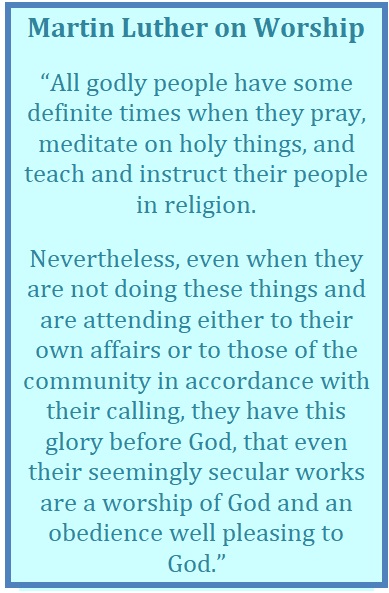 True, we worship God throughout his creation.
True, we worship God throughout his creation.
When I look down from rocky mountain grandeur,
And see the brook and feel the gentle breeze.
Then sings my soul, my savior God, to Thee,
“How great Thou art! How great Thou art!”
As a hiker, I love to sing those words. I even tried it once with a group of men as we arrived at the top of a 10,834’ peak. (Lesson learned: high-altitude singing by panting men is not recommended!)
But there also must be a special time and place for worship—the gathering of believers. Scripture is so emphatic on this:“Let us not give up meeting together, as some are in the habit of doing, but let us encourage one another”(Hebrews 10:25).
Call it “church” or call it something else if that word isn’t trendy enough for you. The early Christians regularly met for worship (likely on the Sabbath or, for Gentile believers, more and more on Sundays—Acts 20:7).
From Paul’s first letter to the Corinthians we learn that the verb “come together” (sunerchomai) was practically a technical term for worship gatherings. During those times, the Christians would sing, pray, eat, observe Communion, use their spiritual gifts to serve one another, hear Scripture read and explained, and more (1 Corinthians 11:17-34; 12-14; also Acts 2:41-44; 4:31; 20:7-8).
Paul is often correcting abuses in 1 Corinthians 11-14, so our task is to construct positive worship principles from both his exhortations and his criticisms. One key principle: we are to approach worship not for what we can gain but for what we can give. ““All…must be done for the strengthening of the church”(1 Corinthians 14:26). Gathered worship is not for self-edification but for the up building of all. The question is not, “Did it serve my needs?” Rather, “Did I serve the needs of others?”
Why do we worship? Because God is great and God is good. Hence, God is
worthy of our worship (Psalm 107:1; 148:13).
Worship the Lord with gladness;
Come before him with joyful songs.
Know that the Lord is God.
It is he who made us, and we are his.
Give thanks to him and praise his name,
For the Lord is good and his love endures forever.(from Psalm 100)
Worship is a key avenue for expressing love for God with all our hearts. Worship is also a key step in our becoming more like God in our love for others. Loving God and loving others are the “Two Great Commandments” (Matthew 22:37-40) and worship will enhance our obedience to both.
Finally, a word on the“How”of worship. Much of my Christian upbringing and training put a great emphasis on the intellectual side of worship. The Sermon was the central feature of worship—all else seemed secondary. But such worship is unbalanced. We are more than our minds. At least two other features of our reality should be engaged in worship: (1) our bodies and (2) our emotions. Without all three, our worship is truncated.
Our bodies are to honor the Lord always (1 Cor. 6:19), especially in worship. So in bodily worship we sing with our lips and vocal chords, clap our hands, lift our hands, use our fingers to give money—even dance to the Lord (if you know how!). We play instruments (if you can!) skillfully with a loud noise.
All of this involves our bodies and draws on our emotions. Worship shouldn’t be rich in mind but poor in body. Nor with our emotions on and the mind off. All my career I have prayed and worked for balance, and often I have found it.
Thus, all my gladsome way along, I sing aloud Thy praises,
That men may hear the grateful song my voice unwearied raises,
Be joyful in the Lord, my heart. Both soul and body bear your part.
To God all praise and glory! – Johann Schutz (1675)
[/vc_column_text][/vc_column][/vc_row][vc_row][vc_column][vc_column_text]
#4 – The Psalms—The First Christian Hymnbook
I have about 20 hymnbooks in my theological library at home. Over my years as a pastor my robust singing congregation welcomed older hymns into worship services alongside fine contemporary songs. The heritage of song today’s churches have is a rich resource (sadly becoming underutilized). First Century Christians didn’t have 20 hymnbooks, but they did have one that was unparalleled and unrivaled: the Book of Psalms. Old themes ever new.
When the “Jesus Movement” happened in the late 1960’s and after, an amazing trend took place. Many Christians began to sing the Psalms! Others expanded their psalm-singing. Composers put the Psalms (as written in the poetic elegance of the King James Version) to simple, delightful tunes.
Thy loving kindness is better than life;
Thy loving kindness is better than life.
My lips shall praise thee, thus will I bless thee;
I will lift up my hands unto thy name.(from Psalm 63:3-4; sung antiphonally)
Today’s church continues to benefit, though I sense the singing of Psalms has waned somewhat. Sad. Let’s reverse this decline!
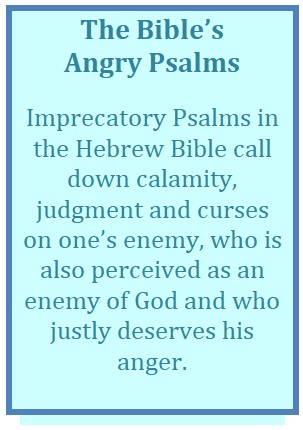 We start with one kind of psalm that is incredibly relevant given the bloodshed in Ukraine. We call them “Imprecatory Psalms” – psalms that call for death and pain on those who work evil in the world (“Imprecation” – what invokes a curse or pronounces a judgment). “Pour out your indignation on them, and let your burning anger overtake them” – Psalm 69:24.
We start with one kind of psalm that is incredibly relevant given the bloodshed in Ukraine. We call them “Imprecatory Psalms” – psalms that call for death and pain on those who work evil in the world (“Imprecation” – what invokes a curse or pronounces a judgment). “Pour out your indignation on them, and let your burning anger overtake them” – Psalm 69:24.
Here is quite a list of Imprecatory Psalms:
Psalm 5:8-10; Psalm 6:8-10; Psalm 11:5-7; Psalm 12:3-4; Psalm 35; Psalm 37; Psalm 40:14-15; Psalm 52:1-7; Psalm 54; Psalm 56:1-7; Psalm 57:1-4; Psalm 58:6-11; Psalm 59; Psalm 69:23-28; Psalm 79; Psalm 83:9-18;
Psalm 94; Psalm 137:7-9; Psalm 139:19-22; Psalm 143.
Some Imprecatory Psalms record the cry of the psalmist for vengeance. Some express what God will do. What are we to make of these psalms?
• They express the pain of a person seriously grieved by another.
• They call for judgment from God, whom we know is just and fair.
• They may question why God seems to delay or not care when wicked people cause good people to suffer.
Imprecation can even be found in the New Testament. “And when he had opened the fifth seal, I saw under the altar the souls of them that were slain for the word of God, and for the testimony which they held: And they cried with a loud voice, saying, How long, O Lord, holy and true, dost thou not judge and avenge our blood on them that dwell on the earth?” (Revelation 6:9-10 KJV).
Let’s be honest. We’ve all felt like pronouncing an imprecation on someone. We may feel that way right now against those who attack the innocent in Ukraine, or who commit crimes of violence on our streets and sidewalks. When evil seems to triumph, we should imprecate! And what could be a better way than to use the imprecations found in the Psalms?
Praying an imprecatory prayer should be part of our “toolbox” as we confront evil or suffer under it obediently—it’s not “unspiritual” so to pray. “If it is possible, as far as it depends on you, live at peace with everyone [but not all will live at peace with you!]. Do not take revenge, my dear friends, but leave room [step aside] for God’s wrath, for it is written: ‘It is mine to avenge; I will repay,’ says the Lord” (Romans 12:18-19 NIV).
This the Lord hates; it is an abomination to him:
“Hands that shed innocent blood” – Proverbs 2:17
Imprecation:
“God, lead us to hate what you hate.
Bring your wrath and judgment on those who
shed innocent blood in our world today.”
Imprecation songs are hard to find today. This Thanksgiving hymn is close:
For the Lord our God shall come, and shall take his harvest home.
From his field shall in that day all offenses purge away.
Give his angels charge at last to the fire the tares to cast…
We cannot cover all the themes in the Psalms. Here are some great ones:
PSALMS OF LAMENTATION (Psalm 137:1-4; see Psalm 42:4)
By the rivers of Babylon, there we sat down,
yea, we wept, when we remembered Zion.
We hanged our harps upon the willows in the midst thereof.
For there they that carried us away captive required of us a song;
and they that wasted us required of us mirth, saying,
“Sing us one of the songs of Zion.”
How shall we sing the Lord’s song in a strange land?
Her own disobedience plus the power of a pagan nation had deprived Israel of her homeland AND her expressive worship. When oppression by others or by Covid, or when our own disobedience prevents us from worshiping as we ought, there should be cries of lamentation.
PSALMS OF CONFESSION (Psalm 32:1-5; see Psalm 51)
Blessed is he whose transgressions are forgiven, whose sins are covered…
When I kept silent, my bones wasted away through my groanings all day long,
For day and night your hand was heavy upon me…
Then I acknowledged my sin to you and did not cover up my iniquity.
I said, “I will confess my transgressions to the LORD”
And you forgave the guilt of my sin.
Sin is our ongoing experience, and confession of it to God is essential (1 John 1:9). So words from the Psalms are there to assist us in our necessary task.
PSALMS OF FRUSTRATION (Psalms 42, 55 and 73)
• Over the success of the wicked while my life seems so unfair (Psalm 73).
• When life doesn’t show me there really is a God who cares (Psalm 42).
• When a good friend fails me (Psalm 55:1-4). Jesus, of course, is the one truly betrayed by one close to him—this psalm was fulfilled in Jesus’ experience. He knew what it meant to be abandoned by friends—for them not to be “there” as they promised, when he needed them.
• When God seems to have forsaken us (Psalm 22:1-2).
The Psalms call us to honesty—about life, ourselves, others. Even about God as we are experiencing him. The Psalms keep us from pious platitudes that so often seem to mark our public prayers and testimonies.
PSALMS CELEBRATING GOD’S CREATION (Psalm 19:1-6; Psalm 104)
The heavens declare the glory of God! On the earth God constantly displays his care for humankind and for all the creatures he has made.
Psalm 19 song: “The Heavens Are Telling” (Joseph Haydn)
Psalm 104 songs: “All Creatures of Our God and King” (Francis of Assisi)
“I Sing the Mighty Power of God that Made the Mountains Rise” (Isaac Watts)
“Shout to the Lord” (Hillsong) and “God of Wonders” (Chris Tomlin)
PSALMS TEACHING THE ART OF WORSHIP
• Worship with sincere and longing hearts (Psalm 42:1-4).
• Worship in a spirit of unity (Psalm 133). Now, this needs attention!
• Worship with lots of gusto! (Psalm 33:1-3 commands four important essentials in worship music: skill (on musical instruments used in worship), freshness, joy and fervor. Psalm 63 calls for uplifted hands and lips of praise. Psalm 150 – “Praise him with trumpet, harp, lyre, tambourine, strings, flute, cymbals. Praise him in the dance.”)
Virtually all the instrumentation and forms of worship in Psalm 150 have been criticized or even banned by churches at one time or another.
King David’s wife Michael criticized his exuberant worship. Kill-joys like her have served on many a church’s worship committee!
Finally, scripture teaches us to sing in psalms and hymns and spiritual songs (Ephesians 5:19; Colossians 3:16). Christians and the churches they belong to will be enthusiastic worshipers if they are filled with the Spirit and the Word of Christ, and obey the psalms they read and sing. I for one cannot understand how a church that sings the psalms could abandon the use of musical instruments, as if God didn’t welcome them in worship any longer.[/vc_column_text][/vc_column][/vc_row][vc_row][vc_column][vc_column_text]
#5 – Day of Rejoicing: Worship in the Book of Nehemiah
(Or: “Church Choirs—To Be or Not To Be?”)
I love many styles of worship. I’ve worshiped in Pentecostal churches out in the countryside. I’ve played the piano in “Hillbilly G” while people clapped, sang and danced in the aisles. I’ve also worshiped in majestic sanctuaries and I’m always thrilled to hear the pipe organs.
My very earliest worship experience was in a formal Lutheran church. Sunday morning worship services began with a grand processional. The pipe organ lifted its volume and began to play the first hymn. At just the right moment, as the choir reached the halfway point down the long center aisle, the choir would start to sing and a thousand worshipers would join in.
The choir was followed by acolytes carrying various ornaments of worship and by the choir director and pastors. The choir would take its positions to the right and left of the altar, the pastors would pray before the altar—all this during the first hymn.
The theological term for this worship experience is “Whoa!”
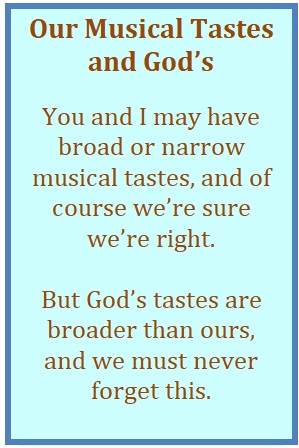 Is there biblical PRECIDENT for such worship? O yes!
Is there biblical PRECIDENT for such worship? O yes!
Two great biblical scenes for choral worship: (1) The great assembly around God’s throne in Revelation 4-5; and
(2) the two choirs at the dedication of Jerusalem’s wall in Nehemiah 12. The angelic hosts reciting “Glory to God” to the shepherds when Jesus was born should be noted also.
But is there a biblical CALL for this kind of worship in our churches today? For this, I have to give a more nuanced answer. I think we must distinguish between what God expects in worship and, on the other hand, what God permits in worship, some of which may be illustrated in Scripture.
Pastors and worship leaders must choose between two ways to “think worship.” One says we can only do what the New Testament requires (what I call the biblical limitation view). What isn’t commanded is forbidden.
Follow this, and you have no choirs. Nor musical instruments. In reality, I’ve never heard an advocate of this view take it to its logical extreme: no church buildings, no audio equipment, no electric, etc.
I would advocate the alternate: the biblical permission view. We ask, “What does Scripture require in worship?” We give answers like: “approach worship with sins confessed, worship ‘in spirit and in truth,’ all the people sing heartily, observe the Sacraments, engage in prayer, hear the Word.”
Beyond these, we have permission to introduce features into worship so long as they are not forbidden. Important: such features must conform to worship principles. We ask ourselves questions such as: “Does this glorify God or ourselves? Does this build other worshipers up spiritually or just give me a private blessing? Is the worship God-centered or man-centered? Does it serve our ‘excellent God’ excellently? Does this lead us toward Jesus or detract from Jesus?” I’ve attended some gatherings where it seems necessary to introduce fun into worship, and I think this violates “biblical permission.”
So, Nehemiah 12 gives biblical precedent to choirs (at least for special occasions—“Days of Rejoicing”!) and no one can say, “Choirs aren’t biblical!” Church leadership is then free as a matter of Christian liberty to have a choral ministry or not, based on the church’s vision, desires, talent and capabilities and subject to principles like what I set forth. There’s much “pomp and ceremony” in Nehemiah 12, and my points above should keep us from the extremes of either demanding it or condemning it. “Formal” worship isn’t the same as “dead formalism” when filled with the Word and the Spirit.
Now, what are the interesting details of Nehemiah’s “Day of Rejoicing?”
1. Jerusalem’s new wall is completed and now it’s time to rejoice!
2. Personnel included Levites, song leaders, musicians, singers, and gatekeepers—the security team. They came to Jerusalem to “celebrate joyfully the dedication with songs of thanksgiving and with the music of cymbals, harps and lyres” (verse 27).
3. Cleansing from sin must precede worship. So the priests and Levites purified themselves ceremonially, and purified the people, the gates and the wall. Yes, spiritual cleansing can be done through a ritual (30).
4. There were two large choirs. The choral processions began at the “Valley Gate” in the new wall and then went to the right and to the left.
5. The right choir went on to the Water Gate. It included musicians and many leaders including Ezra, teacher of God’s Law, who led it (31-37).
6. The second choir went to the left past several gates toward the Gate of the Guard (38-39). The two choirs literally encircled Jerusalem—a sign of taking possession of the city inside the new walls.
7. The two choirs sang under the direction of Jezrahiah, and what a sight and “surround sound” it must have been for the people below and between them! I expect some of the songs were antiphonal, for the setting was ideal for this and some singers were experienced at it (24). Churches can use such a configuration for uplifting worship.
8. All joined in song, for “God had given them great joy… The sound of rejoicing in Jerusalem could be heard far away” (43). Women and children sang. Worship leaders didn’t have the rule some churches have today that children aren’t permitted in the worship service!
9. Sacrifices were also offered under the terms of the Old Covenant (43). We should bring appropriate New Covenant sacrifices, beginning with ourselves (Romans 12:1). We also sacrifice with robust singing and recitation, good deeds and helping others. “Through Jesus…let us continually offer to God a sacrifice of praise, the fruit of our lips that confess his name. And do not forget to do good and to share with others, for with such sacrifices God is pleased” (Hebrews 13:15-16).
10. The people contributed to the cost of worship (44-47). Seat-of-the-pants worship may come cheap, but well-planned, well-prepared, well-presented worship costs. My goodness, they’ve even got singers and musicians on the payroll!
Let’s face it—from a human viewpoint, worship is a ridiculous thing to spend money on. In fact, worship itself is ridiculous! Some churches want to spend minimally on worship. They don’t see worship spending as being “On Mission.”
But while spending a lot on worship doesn’t guarantee great Spirit-filled worship, Spirit-filled worshipers will understand the propriety of spending. If God is pleased with our worship, and we (like the worshipers in Jerusalem) too are pleased, we should take joy and pleasure in spending all the money it takes.
How far do WE need to go to capture the spirit of “Nehemiah Worship” ???
[/vc_column_text][/vc_column][/vc_row][vc_row][vc_column][vc_column_text]
#6 – Learning Worship from the First Christians
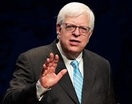 “[Jesus] read the Old Testament. It’s strange that many Christians don’t read what Jesus read.”
“[Jesus] read the Old Testament. It’s strange that many Christians don’t read what Jesus read.”
– Dennis Prager
Christians sometimes romanticize the Early Church. “Why can’t we be like the Early Church, those first Christians?” Some churches and denominations actually stress the importance of duplicating the Early Church, in organization or worship or spiritual gifts.
But if we strive to be like the Early Church we can expect some undesirable things: controversies, excluding people who should be let in, letting in people who should be excluded, false doctrine, worship abuses and legalism.
Still, we can learn a lot by seeing how the Early Church worshiped. The worship patterns of the Early Church are fascinating and helpful.
God does not require that we Xerox the worship of the Early Church and do it exactly that way. But we should consider patterns in Early Church worship and how to apply them to our own experience, so we might worship in a more God-pleasing way.
We should follow the spirit of what we learn and, in accord with our Christian freedom, employ what will serve the tasks of our modern church the best.
Three Biblical PRECEDENTS for Worship
After the birth of the Christian Church on the Day of Pentecost (30 AD?), worship patterns slowly emerged. Early Christian worship didn’t just start from “scratch.” Some things were new, needing to be developed. But three key features were quite old, simply needing to be appreciated and used.
First, the Early Church was never without a BIBLE (Holy Scripture).
It already had what Christians call “The Old Testament”—a body of literature Paul would describe as “inspired of God and profitable…” (2 Timothy 3:15-17). They had words from God that could light their pathway in worship and more.
Second, the Early Church was never without a HYMNBOOK.
It already possessed The Psalms. Some traditions in the Protestant Reformation have said we should ONLY sing the Psalms. That’s legalistic. Isaac Watts (1674-1748), “The Father of English Hymnody,” wrote 800 songs, many based on the Psalms (“O God Our Help in Ages Past” and “Give to Our God Immortal Praise”), but also songs not from the Psalms (“Jesus Shall Reign” and “When I Survey the Wondrous Cross”). I’m glad he “broke the mold.”
Still, to ignore or minimize this rich, inspired hymnbook is poverty. I mention again that the “Jesus Movement” of the 1960’s and 70’s restored Psalm-singing to the church. If you are old enough to remember, think how little Psalm-singing took place before that movement.
Third, the Early Church was never without a TRADITION.
This “tradition” was the worship of the Jewish synagogue (read Luke 4:14-21). The synagogue service had these elements (note: we know more about worship details of the 2nd and 3rd centuries than we do of the 1st century):
• The Confession (Deuteronomy 6:4 – “the Lord is one.”)
• The Prayers
• The Readings (from the Law and Prophets)
• The Instruction from the scriptures
• The Benediction
Worship in the synagogue was “God-centered” and Jesus shared in it. Here is an important word on Jesus’ worship habits: “On the Sabbath day he went into the synagogue, as was his custom” (Luke 4:16).
Jesus, our example, nurtured faithful and meaningful worship habits. In this spirit, we are instructed not to forsake our own “gathering together” (Hebrews 10:25). Do you remember the question, “WWJD?” (“What Would Jesus Do?”)? Jesus would be in a worship gathering on The Lord’s Day.
A Biblical PATTERN for Worship (Acts 2:42)
Since first discovering it I have always encouraged Christians (especially new believers) to develop the pattern for worship found in Acts 2:42. Once baptized, these new believers “devoted themselves to the apostles’ teaching and to the fellowship, to the breaking of bread and to [the] prayers.”
1. The Apostles’ Doctrine– This is the teaching of those chosen and taught by Jesus to unfold the meaning of his life and death and to establish his followers in the Faith. Now this teaching is found in the New Testament. It is also well summarized in the historic creeds we may recite in church.
“The Apostles’ Doctrine” will keep us from heresy (which contradicts and destroys the church’s message) and from market-driven or politics-driven trendy topics (which water down or ignore the church’s message).
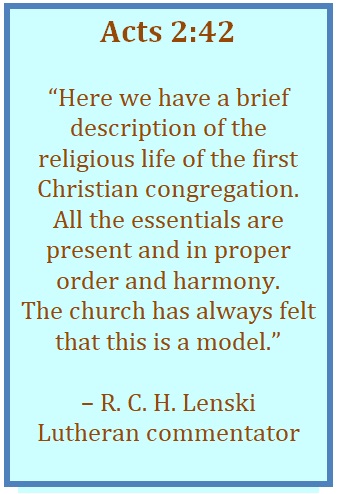 2. The Fellowship– Regular “getting together” to help with needs and share warmth, rejoicing and tears. This protects us from unhealthy spiritual individualism (“I come to the garden alone…”). Biblical fellowship is well expressed in the familiar hymn:
2. The Fellowship– Regular “getting together” to help with needs and share warmth, rejoicing and tears. This protects us from unhealthy spiritual individualism (“I come to the garden alone…”). Biblical fellowship is well expressed in the familiar hymn:
Blest be the tie that binds
Our hearts in Christian love;
The fellowship of kindred minds
Is like to that above.
We share each other’s woes,
Our mutual burdens bear;
And often for each other flows
The sympathizing tear.
3. The Breaking of [The] Bread– This is more than “breaking bread” as a sign of friendship and togetherness. There is a definite article (“the”) before “bread.” It very likely refers to “the Bread” of the Lord’s Table, the Communion Bread. This divine tradition was established very quickly in the life of the Early Church (1 Corinthians 11:23-24 NIV): “The Lord Jesus, on the night he was betrayed, took bread, and when he had given thanks, he broke it and said, ‘This is my body, which is for you; do this in remembrance of me.’”
Frequent receiving of “Communion” keeps our thoughts Cross-centered and renews our intimate togetherness with Jesus, the One crucified for us.
4. The Prayers– Meaningful prayer is often spontaneous. Here though the reference is probably to planned or ritual prayers. Rather than criticizing this as empty ritualism (which it can be, but our spontaneous prayers can be empty and torturous to others as well!) we can use ritual prayers helpfully.
The best prayer ritual we can ever have is the frequent recitation of “The Lord’s Prayer” Jesus gave us to pray. We should also pray the Psalms.
Churches always face the pressure to be conformed to the world rather than transformed by the Word. We ask people what they want and make worship “man-centered.” Instead, we should seek out what God wants and make worship “God-centered.” * We demand that the church meet our needs. Instead, we should ask, “What needs did God create the church to meet?”
If our worship is centered on God, strengthening to believers, sensitive to non-believers, and meeting the needs God equipped it to meet, then we will have good worship. Godly-minded people will be pleased. Most of all, God will be pleased. All this we learn from the worship of the earliest Christians.
I love to live in Your house, O Lord.
I love to sit here at Your feet,
And let Your words be the food I eat.
The food I eat.
I love to live in Your house, O Lord,
to dine at the table with my King.
And give to You the praise I bring.
The praise I bring.
– “The House of the Lord” by Glen Veenstra
* Churches are free to “flex” on morally-neutral features of worship (kinds of instrumentation, choirs, praise teams, style of sermon delivery, etc.) for the greater benefit of those present. “Being all things to all people” can be difficult if the church has multiple kinds of people attending with different preferences. Paul doesn’t teach that oldsters and the “weak” should control things (see 1 Corinthians 9:19-23), nor does he permit legalism to prevail (Galatians 2:11-15).[/vc_column_text][/vc_column][/vc_row][vc_row][vc_column][vc_column_text]
$7 – “Ceremonies Sent from God that Help Us Worship”
Human beings are incurably ceremonial, and that’s fine!
At the Naval Weapons Station in Seal Beach, California I offered a prayer at the changing of the command. I prayed to dedicate a new bridge and a new firehouse and, yes, a parking structure for the LA County Courthouse in Long Beach. All these events were ceremonies. I even prepared and led a ceremony once for the cleansing of a hotel room where the last guest had killed himself!
And we have religious ceremonies! We have weddings, funerals and memorials, baby dedications, dedications of new buildings and ministries.
Scripture itself teaches certain ceremonies. Passover, Pentecost and the Day of Atonement are featured ceremonies in the Old Testament. The New Testament speaks of anointing the sick with oil (James 5:14-16), washing the feet of Jesus’ disciples (John 13:1-17), and laying on of hands for Spirit empowerment (1 Timothy 4:14) or special ministry (Acts 13:3).
But let’s focus on two highly important ceremonies God has given to the church and provided guidance in our doing of them—BAPTISM and COMMUNION (the Eucharist). Here are 10 Facts for us to know and heed:
Fact #1 – Baptism and Communion may be called either “ORDINANCES” or “SACRAMENTS.”
What is a “Sacrament”?
A holy ordinance instituted by Christ; wherein, by sensible signs, Christ and the benefits of the new covenant, are represented, sealed, and applied to believers. (Westminster Shorter Catechism, Q&A 92)
I can use either word “ordinance” (something ordered by the Lord) or “sacrament.“ I prefer “sacrament” because (1) I believe God is uniquely present and graciously ministering to us in these rituals, and (2) I think both baptism and Communion have been wrongly minimized in many churches. In the Sacraments, God takes ordinary practices and leads us to extraordinary truths and benefits.
Fact #2 – Sacraments may be explained with three words:
“SYMBOL” – represents a saving work of God.(But never should we think of Baptism and Communion as “just symbols” or “only symbols.”)
“SIGN” – points to a saving work of God.(Without the sign, you may pass over it and miss it)
“SEAL” – confirms the saving work of God.(Like a handshake seals the deal)
Fact #3 – The Sacraments have three features: the OUTWARD SIGN, the INWARD REALITY, and the WORD of GOD (“Words of Institution”) that by the Spirit brings the sign and the reality together into a DIVINE EVENT.
What makes Baptism different from taking a dip in the pool?
Or Communion different from eating food samples at Costco?
Answer: the Word of God, which connects the outward sign to the inward reality. “I baptize you in the name of the Father and of the Son and of the Holy Spirit” or “This is my body, given for you” and “This is my blood of the covenant, poured out for many.”
Fact #4 – The Sacraments give a BOOST to our FAITH—God seals his promises to us through visible signs.
With the disciples, we need to say to Jesus, “Lord, increase our faith!” Admit it—our faith often needs a crutch! God understands the brittleness of our faith. So, through signs that we hear, see, feel, smell, and taste, God lifts our hearts to spiritual realities so we might perceive them by faith.
Fact #5 – The Sacraments should be seen as “means of grace” – avenues whereby God extends his grace to us. But don’t make an error in understanding this.
Error #1 – There are no other “means of grace.”
In his excellent Systematic Theology, Wayne Grudem explains that God uses many ways to give more grace to Christians in addition to baptism and communion: teaching of the Word, prayer for one another, worship, discipline, giving, spiritual gifts, fellowship, evangelism, ministry to one another.
Error #2 – They are automatic and effective, even if faith is absent.
No, Baptism is not like a car wash, and Communion is not like a vaccine.
Error #3 – Baptism and Communion are good works we do for God.
No, they are good works God does for us. Just as we receive the gift of Christ, so we receive baptism and receive Jesus’ body and blood. God in his sovereign grace has chosen to bestow spiritual benefits on us through tangible signs he has designed to bless and enrich our faith.
Fact #6 – The Sacraments can be signs of JUDGMENT instead of signs of grace (I Corinthians 11:27-32).
The Corinthian Church, Paul’s spiritual problem child, managed even to mess up Communion by turning its Love Feasts into times of selfish gluttony and drunkenness. So Paul warned the church of God’s discipline.
Abuse of Communion can bring discipline from God. It is no ordinary table that we are approaching.
Today Roman Catholic leaders who would deny the Eucharist to Catholics who actively promote abortion rights are accused of “weaponizing” the Eucharist. In reality, they are mercifully warning of God’s judgment.
Fact #7 – The Sacraments connect us to the PAST (I Corinthians 11:26).
Staying in touch with our spiritual roots is becoming a lost practice. Baptism and Communion help correct that. In baptism we connect with our Lord’s baptism, obedient life and suffering. In Communion, Jesus said, “This do in remembrance of me” (1 Corinthians 11:26). The Communion Table is a vivid reminder, a spiritual time machine, that sets us before the Cross to ponder Jesus’ sacrifice and its meaning to us.
Fact #8 – The Sacraments connect us to CHRIST and to his CHURCH (I Corinthians 12:13; 10:17).
Baptism is the usual entryway into the life of the church. “By one Spirit we are all baptized into one body…” (1 Corinthians 12:13).
 Communion binds us together by the Spirit of God (1 Corinthians 10:17). I prefer to express this with a “common loaf” if at all possible. Breaking bread with my brother or sister is not privatistic like eating a tiny morsel of bread with my eyes closed can be.
Communion binds us together by the Spirit of God (1 Corinthians 10:17). I prefer to express this with a “common loaf” if at all possible. Breaking bread with my brother or sister is not privatistic like eating a tiny morsel of bread with my eyes closed can be.
Fact #9 – Baptism is our Sacrament of Initiation. Communion is our Sacrament of Continuation.
Baptism is God’s appointed sacrament to launch us on the road as a disciple of Christ. It is “once for all” – never to be repeated. We start the journey once.
Communion is our continuing sacrament of renewed fellowship with Christ in the presence of one another. When we fall off the spiritual pathway and get back on, we don’t return to the beginning. We continue at the Lord’s Table.
New Christians should quickly move on from baptism to nurture the good habits that build our relationship with a Christian community (Acts 2:41-42). This includes devoting ourselves to “the breaking of the bread.”
As a “continuing sacrament,” Communion should be frequent, even weekly.
Fact #10 – The Sacraments point us to the FUTURE—our complete salvation (Mark 14:22-25).
Our baptism initiates our citizenship in the coming Kingdom. By it we take our “oath of citizenship” as we call on the Lord (Acts 22:16; Romans 10:9-10).
Jesus linked Communion with the future: “I tell you the truth, I will not drink again of the fruit of the vine until that day when I drink it anew in the kingdom of God” (Mark 14:23-25).
I urge us all to elevate our understanding of the Sacraments—God’s enabling, uplifting gifts to his church. I pray our worship will always be enhanced whenever we rejoice with those who are baptized and partake at the Lord’s Table with all the Faithful.[/vc_column_text][/vc_column][/vc_row][vc_row][vc_column][vc_column_text]
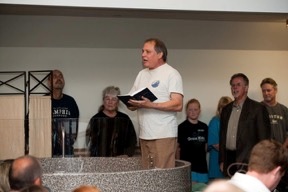 Taking Our Christian Baptism Seriously
Taking Our Christian Baptism Seriously
“We were all baptized by one Spirit so as to form one body—whether Jews or Gentiles, slave or free—and we were all given the one Spirit to drink.” – 1 Corinthians 12:13 NIV
This baptismal service (“yours truly” officiating) dates back to 2011. After considering many baptismal options, Grace Community Church in Seal Beach, California uses one of these: (1) this portable baptistry or
(2) the Pacific Ocean one block away!
Our church practices a mode of immersion baptism known as “Trine Immersion” (a triple immersion). This mode is easily traceable back to the post-apostolic church (early 2nd Century and later). Thus, we need this kind of baptistry (though on rare occasions we have baptized by pouring water over the head of the candidate—which also is historically based).
Baptisms in the baptistry take place during a Sunday morning service. Baptisms in the ocean take place when the water is nice and warm.
Our church’s Elder Board once received a request that we OK a baptismal service in a backyard swimming pool, because the candidates for baptism didn’t want their baptism to identify them with the church. The Board wisely and rightly said NO! Read James Packer’s lesson excerpt:
Baptism has social implications. Involvement in the “body life” of mutual sympathy and service for Christ must be the rule for all the baptized.
Isolationism in church—sitting apart, not getting acquainted, dodging responsibility, and so on—is often condemned as denying the meaning of the Lord’s Supper. We need to see that it denies the meaning of baptism too, and just as drastically. Is that clear to us now? Are we making it a matter of conscience that by active love of our fellow-Christians we should show that we know what our baptism means?
– James Packer, Growing in Christ[/vc_column_text][/vc_column][/vc_row][vc_row][vc_column][vc_column_text]
#8 – “Worship Beneath the Cross of Jesus” (Luke 23:26-56)
“Crucified for us under Pontius Pilate,
He suffered death and was buried”
The Nicene Creed (325 AD)
For Christians, Jesus’ death on the cross is a powerful moment of history. “The message of the cross is foolishness to those who are perishing,
but to us who are being saved it is the power of God” (1 Corinthians 1:18 NIV).
The Apostle Paul opposed any softening of the Gospel. The Gospel was being diminished in the church at Corinth by the “wisdom of this age” to make it fashionable. Against this, he asserted, “We preach Christ crucified!”
Modern “wisdoms of this age” include religious liberalism, Americanism, “self-help” and therapeutic messages, religious-zeal environmentalism, political issues, “health and wealth” gospels, “wokeness” and adjustments in worship and message to draw crowds. Many can be found in evangelical churches.
If the cross of Jesus is central to our message and who we are as Christians, then surely it will be central in our worship. If it isn’t, something is very wrong. What are some themes of the cross that should affect our worship?
1. The Cross calls us to FOLLOW Jesus in SUFFERING and OBEDIENCE.
As Jesus was led away to be crucified, “They seized Simon from Cyrene…and put the cross on him and made him carry it behind Jesus” (Luke 23:26).
Perhaps Simon was in Jerusalem for the Passover celebration. Whatever his reason for being there, he happened to be in the right place at the right time. He felt the touch of a Roman sword on his shoulder and heard a voice of authority say, “You have just volunteered!”
So Simon carried the cross for Jesus, becoming a type of every follower of Jesus, modeling what our task should be. Jesus said (Luke 14:27), “Anyone who does not carry his cross and follow me cannot be my disciple.”
Not all suffering is cross-bearing, and not all cross-bearing is from obedience to Jesus (some Christians make their own crosses and carry them loudly!). But when loyalty to Jesus leads to suffering and sacrifice, you are taking up your cross and following Jesus. See 1 Peter 2:20-21 and 4:15-16.
Simon’s deed and our own calling to bear the cross should lead us to sing:
May I be willing, Lord, to bear daily my cross for Thee;
Even Thy cross of grief to share. Thou hast borne all for me.
– “Lead Me to Calvary” by Jennie Evelyn Hussey, 1921
2. The Cross sets forth Jesus as THE MAN FOR SINNERS.
Many Christians are VSP’s. Jesus offended the VSP’s— the Very Separated People. On the day of his baptism he identified with sinners. He feasted with sinners, and his accusers asked him, “Why do you eat and drink with tax collectors and sinners?” Jesus said, “I have not come to call the righteous, but sinners to repentance” (Luke 5:27-32).
Again and again, Jesus placed himself on the side of the sinner crowd rather than with the self-righteous crowd (read his encounter with the crooked tax collector Zacchaeus— Luke 19:1-10).
Now at Calvary, Jesus is once again with sinners. “Two other men, both criminals, were also led out with him to be executed. When they came to the place called the Skull, there they crucified him, along with the criminals, one on his right, one on his left” (Luke 23:32-33).
In worship we celebrate “the Man for sinners” and declare:
Man of sorrows! What a name for the Son of God who came.
Ruined sinners to reclaim. Hallelujah! What a Savior!
– P. P. Bliss (1875)
Jesus! What a friend for sinners. Jesus! Lover of my soul.
Friends may fail me; foes assail me. He, my savior, makes me whole.
Hallelujah! What a savior. Hallelujah! What a friend.
Saving, helping, keeping, loving—he is with me to the end.
– J. Wilber Chapman (1910)
3. The Cross teaches us FORGIVENESS – GOD forgives, WE should too.
Jesus prayed for his tormenters (Luke 23:34). “Father, forgive them, for they do not know what they are doing.”
This prayer must have caught on with the first Christians because Stephen, the first Christian martyr, prayed the same way at his execution. Stephen fell to his knees and cried out, “Lord, do not hold this sin against them.” (Acts 7:60).
Paul knew what it was like to experience God’s forgiveness: “I was once a blasphemer, a persecutor and a violent man. I was shown mercy because I acted in ignorance and unbelief. The grace of our Lord was poured out on me abundantly” (I Timothy 1:13-14). He would teach the church: “Be kind and compassionate to one another, forgiving each other, just as in Christ God forgave you” (Ephesians 4:32). So in worship we bear witness to forgiveness:
Five bleeding wounds he bears, received on Calvary.
They pour effectual prayers, they strongly plead for me.
“Forgive him, O forgive,” they cry, “Nor let that ransomed sinner die!”
– “Arise, My Soul, Arise” by Charles Wesley (1742)
Upon that cross of Jesus mine eye at times can see
The very dying form of One Who suffered there for me;
And from my stricken heart with tears two wonders I confess;
The wonders of redeeming love and my unworthiness.
– “Beneath the Cross of Jesus” by Elizabeth Cecilia Clephane (1868)
4. The Cross brings us SALVATION because JESUS BORE OUR SINS.
He was pierced for our transgressions, He was crushed for our iniquities;
The punishment that brought us peace was upon him…
We all, like sheep, have gone astray, Each of us has turned to his own way;
And the Lord has laid on him the iniquity of us all. (Isaiah 53:5-6)
One of the two criminals crucified with Jesus said, “We are getting what our deeds deserve, but this man has done nothing wrong.” He turned to Jesus and pleaded, “Remember me when you come into your kingdom.” Jesus replied,
“I tell you the truth, today you will be with me in Paradise” (Luke 23:42-43).
Guilty vile and helpless we; spotless Lamb of God was he.
Full atonement—can it be? Hallelujah! What a Savior!
What Thou, my Lord, hast suffered was all for sinners’ gain.
Mine, mine was the transgression, but Thine the deadly pain.
– “O Sacred Head, Now Wounded” attr. to Bernard of Clairvaux (12th Century)
5. The Cross signals Jesus’ VICTORY over DEATH, EVIL and the DEVIL.
I have two problems with how evangelicals often observe Communion:
(1) We hurry through it. We have “fast food” McBread and McCup. “Here’s the Bread, here’s the Cup—We’re all done, time is up.”
(2) We are too somber. We make Communion like a “wake” for the dead.
Early Christians feasted and celebrated the Cross as a victory. This “victory celebration” has been lost in many church Communions today.
“Jesus cried out with a loud voice, ‘Father, into your hands I commit my spirit’” (Luke 23:46). Jesus thus declared: “My task is complete. The price has been paid. Salvation is secured. It is finished! Take me now, Father.”
Lifted up was he to die. “It is finished” was his cry.
Now in heaven exalted high. Hallelujah! What a Savior!
The Apostle Paul is clear that the cross is a great triumph. “Having disarmed the powers and authorities, he made a public spectacle of them, triumphing over them by the cross” (Colossians 2:15). So in worship we proclaim the victory:
This is the feast of victory for our God. Alleluia, Alleluia, Alleluia.
1 Worthy is Christ, the Lamb who was slain,
whose blood set us free to be people of God.
2 Power, riches, wisdom and strength, and honor, blessing and glory are his.
3 Sing with all the people of God and join in the hymn of all creation.
4 Blessing, honor, glory and might be to God and the Lamb forever. Amen.
For the Lamb who was slain has begun his reign. Alleluia
– John W. Arthur (1970)
[/vc_column_text][/vc_column][/vc_row][vc_row][vc_column][vc_column_text]
 #9 – “Triumphant Worship:
#9 – “Triumphant Worship:
The Book of Revelation”
Throughout much of my Christian life (age 9+) I looked on the Bible’s last book, the Book of Revelation, as a mysterious unfolding of the End Times, a puzzle to be pieced together. If we thought we had it figured out, my how dogmatic we could be!
A creative thought entered my mind a few years ago as I read and pondered this book anew. Is it possible to look at this book “Doxologically”? That is, can Revelation be seen as a Book of Worship?I viewed the whole book through that lens and marveled at the treasures waiting to be opened. As you move through the coming points, see how many songs you recognize!
1. I learned about the God I should Worship
In Revelation we immediately see incipient worship of God as a Trinity. True, it would be many years for the Christian church to articulate the doctrine of the Trinity as it still resonates with us. But it would be wrong to overlook the “seeds” of this teaching found in the New Testament.
“Grace and peace to you from him which is, and which was, and which is to come, and from the seven spirits which are before his throne, and from Jesus Christ, who is the faithful witness, and the first begotten of the dead, and the prince of the kings of the earth” (1:4-5, see through verse 8).
Our God is powerful Creator of All. So we sing, “Thou art worthy…to receive glory and honor and power, for thou hast created all things, and for thy pleasure they were created…” (from 4:11 King James Version)
We worship “the Lamb of God” who was slain, his blood shed for our redemption, who now lives and rules (see 5:9-13). “Worthy is the Lamb that was slain to receive power, and riches, and wisdom, and strength, and honor, and glory, and blessing” (5:12). God the Father and Jesus the Lamb are worshipped together: “Blessing, and honor, and glory, and power, be unto him that sitteth upon the throne, and unto the Lamb for ever and ever” (5:13).
I use the King James Version throughout this essay because of its elegant poetic language. Painting by Raphael (1518): Michael the Archangel vanquishes Satan (Revelation 12:7-9).
2. I learned about the Worshipers too
The heavenly worship scene in chapters 4 and 5 has a fascinating sequence of worshipers. It starts (I am happy to say) with a quartet! “Four living creatures” repeat the praise: “Holy, holy, holy, Lord God Almighty, which was, and is, and is to come” (4:7).
Second, a choir of 24 elders breaks into praise (4:11 and 5:9-10). This is followed by a huge multitude of angels (5:11-12), then by the whole of creation (5:13). Lastly, the praise reverts back to the quartet, with their “Amen!” as they prostrate themselves in worship before God (5:14).
I challenge every worship leader to think creatively on how a version of this could be reflected in our worship services! Start small, crescendo greatly, decrescendo to how you began, end with demonstrable worship.
A special category of worshipers is highlighted in Revelation—persecuted saints. They have “come out of the great tribulation” (7:13-14) and cry out, “Salvation to our God which sitteth upon the throne, and unto the Lamb.”
They are now in God’s presence, never to suffer again, their tears forever wiped away (7:15-17). Think of this scene when you think of all who are persecuted a lot or a little today for being faithful to Jesus. Think creatively on how the spirit of this heavenly scene could be expressed in today’s worship.
3. I learned about how Worship can be done
The Book of Revelation records many features of worship. Many Christians have never practiced them but some Christian traditions include them in worship. Being in the Book of Revelation, they are ipso facto forms of “New Testament” worship and can be incorporated into our worship accordingly.
We find honor and humility expressed in actions. The Elders fall down and lay their crowns before God’s throne (4:10). The writer John falls down before the glorious Christ (1:17). Prostrating oneself isn’t natural to many American Christians, but it certainly is an appropriate form of worship.
Symbolic clothing may be worn. A worshiping multitude is clothed in white robes (7:9), probably symbolizing purity. On occasion (commonly at weddings) I’ve worn a robe which (I think) befits the solemnity of the occasion. I conducted a funeral in South-Central Los Angeles once and, as the only “Anglo” present, I thought it befitting to show respect to the occasion and to all who attended by wearing a robe.
Worshipers celebrate by holding palm branches – we at least might do that on Palm Sunday (7:9). Incense and smoke accompany the rising of our prayers to God (8:3-4). Such prayers may include pleas for God to judge evil, given how the angel takes the censor containing the prayers and, before God, fills it with fire and hurls it to the earth. If this scene is found in “Revelation Worship” then such symbolism is certainly appropriate now.
Then we read about extremely loud praise (5:12; 7:10). In much of my background this kind of worship would be seen as hyper-emotionalism, except in my Pentecostal circles. We may frown on it and avoid it. Perhaps instead we ought to engage in it “when the Spirit moves us all.”
Then there is worship through silence—for half an hour (8:1). This seems to be the “silence of awe” prior to a great work of God. There can also be the silence of preparation, prayer, sorrow, patience and more. Whatever the silence expresses, it shows a place for “holy silence” in worship. But there is also boring silence, so we must be discernful. “Holy silence” rises as a challenge to some contemporary worship styles which always have to have something happening—fast movement, sound bites, quick images, etc.
The Lord is in his holy temple.
Let all the earth be silent before him. (Habakkuk 2:20)
I wouldn’t want to be legalistic either way—banning these forms of worship or demanding them, certainly not as proofs of spirituality. I do want to be open to them, whether they seem highly liturgical or highly emotional.
4. I learned about Worship that SHOULDN’T be done
In Leviticus 10:1-5 we read the chilling account of the deaths of Nadab and Abihu, priests and sons of the High Priest Aaron. What was their wrong? Offering “unauthorized fire” before the Lord contrary to his command.
The passage raises more questions than answers. We’re not told exactly what they did wrong. I think the key phrase is: “…contrary to [God’s] command.”
Our Christian liberty gives us lots of freedom to be creative in worship. We don’t have to have a command from God for everything we do. But we must not do anything contrary to his command. Are we guilty in this? Do we break worship rules such as in 1 Corinthians 14 (use of spiritual gifts) or
1 Timothy 2 (modest dress at worship)? Do we forsake the Lord’s Table? Do we fail to practice robust Spirit-filled singing in our services? Are our messages truly “preaching the Word” or have we wandered off track?
Here are three forms of worship forbidden in the Book of Revelation:
• Worship of Demons and Idols (9:20-21)
• Worship of the Devil and the Antichrist (13:4, 11-17; 14:9-10)
• Worship of Godless Commercialism (read the lament of chapter 18)
Finally, we must not worship God’s angels. Twice in this book John falls before God’s angel as the angel conveys God’s invitation to “the wedding supper of the Lamb” (19:10) and shows him The New Jerusalem (22:8). In both cases the angel says, “Do not do it! Worship God!” (verse 9). “Worship” here (the verb is proskuneō) is simply to “fall toward.” It is forbidden to “proskuneō” before an angel or before a spiritual leader (Acts 10:24-26).
When Jesus squared off with the Devil and his temptations, Jesus responded forcefully and clearly: “Worship [proskuneō] the Lord your God, and serve him only” – Matthew 4:10. Interesting that John observes the glorious presence of Jesus (1:12-16) and fell at his feet as though dead (1:17). Jesus accepted that worship and placed his right hand on John, saying, “Do not be afraid.”
Obedient worship of God is a matter of the highest urgency. The Book of Revelation gives us marvelous guidance through instruction and example and worship texts (see next page). Let’s hear and heed what God’s Spirit is saying to the churches about worship.
Worship Songs given to the Church
from the Book of Revelation
George Frideric Handel’s “Messiah”
“Worthy Is The Lamb” (5:12)
“Amen” (5:14)
“Hallelujah!” (11:15; 19:1-4, 16)
Other Christian Hymnody and Choruses
Just a partial list I compiled! What songs would you suggest?
“Lo, He Comes in Clouds Descending” (1:7)
“There’s a New Name Written Down in Glory” (2:17)
“Round the Throne” (chapter 4)
“Behold Our God” (4:2)
“Holy, Holy, Holy” (4:8)
“Thou Art Worthy” (4:11)
“Is He Worthy?” (5:2-5)
“You Are Worthy” (5:9)
“O for a Thousand Tongues to Sing” (5:11)
“All Hail the Power of Jesus Name” (5:11-14; 19:11-16)
“To Him Who Sits on the Throne” (5:13)
“Agnus Dei” (5:23)
“I Wish We’d All Been Ready” (6:5-6)
“Blessing and Glory and Wisdom and Thanks…to our God forever” (7:12)
“Are You Washed in the Blood?” (7:14)
“We Shall Overcome” (12:11)
“Come, Ye Thankful People, Come” (14:14-16)
“Battle Hymn of the Republic” (14:19)
“Praise Our God, All Ye His Servants” (19:5)
“Crown Him with Many Crowns” (19:12)
“The Holy City” (21:1-3, 23; 22:4-5)
“Twelve Gates of the City” (21:12-13)
“Lily of the Valley” (22:16)
“All Who Are Thirsty” (22:17)
“Soon and Very Soon” (22:20)
[/vc_column_text][/vc_column][/vc_row][vc_row][vc_column][vc_column_text]
 #10 – Worship at the Birth of Jesus
#10 – Worship at the Birth of Jesus
“O Come Let Us Adore Him!”
“Pastor Don, why doesn’t our church have a Christmas Eve service?”
“I’m always trying to come up with new ideas but I have two problems. One, half my ideas are no good. Two, I don’t know which half!” I shared this thought several times over the years with church leadership and a couple of times in sermons.
So it was with Christmas Eve services for many years. “Pastor Don, why doesn’t our church have a Christmas Eve service? I’d really like to spend this time with my own church family!” – from a High School girl, devout and active in our church. My standard answer drawn, I thought, from many years of experience: “Our church isn’t much into special services.”
But one year I finally gave in and we had our first Christmas Eve service.
The church was absolutely packed, which for us would be over 300. Good riddance to my wrong idea about Christmas Eve services! Since then, we’ve increased to two and then three services.
People really love to sing at Christmas time. They really, really love to sing traditional Christmas Carols. They want to hear familiar biblical stories about the birth of Jesus. Visitors will come and come. Now I know! Christmas Eve and Easter are the two times we can still draw visitors with ease, even in the highly-secular communities where many of us live.
Here are some pointers for having a fine Christmas Eve experience:
1. Plan the service(s) with visitors foremost in your mind. No “in house” or unexplained terms about Christmas (like “The Incarnation”). If you focus on visitors, members will benefit too. But the opposite isn’t true.
2. Advertise as would be reasonable in your locale (our small community has a newspaper everyone gets, and I preferred a large ad in it). But remember that personal invitation by church members is the best way to bring in visitors—tried, tested, proven.
3. Keep the service under an hour. Too much of a good thing can ruin it. Better to have people wish they had sung more than wish they had gotten out earlier. Remember, it’s a busy season for many.
4. Separate the services by enough time for people to fellowship, for the worship area to be tidied up, and for parking to “turn over.” I’d recommend a one-hour break, but half an hour might work.
5. I have no opinion on whether afternoon or evening service times are better, or a mix of the two. This is a bigger issue if you have only one service.
6. Have the worship location abundantly decorated for Christmas, indoors and out. Clear and prominent signage on childcare, restrooms, worship area.
7. Sing the familiar, traditional Christmas Carols and do it with simplicity, not with a lot of flourishes or anything else that would stifle singing.
8. Don’t sing the carols in isolation from one another, but tie them in with the Christmas stories of the Bible through appropriate scripture readings.
9. Have special music, but be sure to make it impactful. Use the best talent the church has to offer. Don’t overdo it.
10. If someone can do it skillfully, have a Children’s Story with the children down front. But make it brief and interesting to the kids (the adults will love it too). If you can’t do these with ease, leave it out.
11. Soft sell the church to visitors through brief, excellent announcements and a table display. Visitors are not a captive audience. Make them feel welcome but not on the spot. Make them want to come back.
12. Don’t take an offering or, if you do, make it specific to some special seasonal ministry of care.
13. Share the Gospel in a simple, brief sermon, drawn from the biblical stories of the birth of Jesus. Invite a heart-response. But no tricks or “come forward” invitations.
14. I’m ambivalent about having everyone holding a lit candle. Check fire regulations. You can’t be too careful.
15. If you have multiple services, treat each service and those present as if it’s the only service you are having. Never refer back to a previous one.
16. Serve some hot Wassail outside after the service. The tavern next door to our church often would prepare it for us for free (and not spiked)!
17. One idea if you have multiple services: schedule one as late evening (11:00) and serve Communion at it (and see how it goes).
18. Sadly, have more-than-adequate security for the services.
If, as this year, Christmas Day falls on a Sunday, have just one service (space permitting) and include all groups and ages in it. Limit it to one hour. Consider the wisdom of whether to make it identical to the Christmas Eve services. And don’t forget—lots of Christmas Carols and scripture readings.
Christmas celebration can continue into January if Epiphany Sunday (January 8 next year) is observed. It is based on the visit of the Magi (Matthew 2).
Songs We Learn from the Stories of Jesus’ Birth
One reason the Christmas Stories induce worship is that they introduce us to God’s Holy Spirit—an essential power in genuine Christian worship.
The Holy Spirit’s presence and power enable robust, sincere singing from our hearts. A mark of the truly Spirit-filled church is its heart-felt singing to God.
“Be filled with the Spirit, speaking to one another with psalms, hymns and spiritual songs, singing and making music from your heart to the Lord.” (Ephesians 5:18-19)
No surprise, then, that the Holy Spirit inspired four songs that have become vital features of Christmas worship. And no surprise that the Gospel of Luke, which lets us know that the coming of Christ brings the era of the Holy Spirit, would have these songs for us. We know them by titles that come from the first word(s) of their text as found in the Latin Bible.
1. The “Magnificat” – Mary’s Song (Luke 1:46-55)
Mary’s Song emerges from a marvelous encounter between two, no—make that four, persons: (1) the Virgin Mary herself, (2) her relative Elizabeth, (3) Elizabeth’s unborn son John, and (4) Mary’s unborn son Jesus (1:39-45).
After Elizabeth blessed her (“Blessed is she who has believed that what the Lord said to her will be accomplished!”), Mary exclaimed:
• She, Mary, would be honored by God for her humble obedience (46-49). All generations will call her “Blessed.” The reformer John Calvin (1509-1564) said of Mary, “She deserves to be called blessed, for God has accorded her a singular distinction, to prepare his son for the world, in whom she was spiritually reborn.”
• Her son will turn the world’s values upside down (50-53). He will give mercy to those who fear him, but dismantle the proud and powerful. Mary’s words, a standing challenge to our errant status quo, should mold our understanding of God’s will for his world more than they do.
• God will remember his promises to his people and be their help (54-55).
2. The “Benedictus” – Zechariah’s Song (Luke 1:67-79)
The Christmas Story actually begins with the story of an old man named Zechariah, a priest of God favored to be the father of “John the Baptist.”
Read the fine accounts in Luke 1 of Zechariah, his wife Elizabeth, and John.
On the day baby John was circumcised (the 8th day), Zechariah brought forth the Spirit-induced song known as the “Benedictus.”
• Jesus will bring us deliverance from our spiritual enemies and enable us to delight in doing the will of God (68-75).
• John will prepare the people for the coming of the Lord (in the person of Jesus) and will bring them the knowledge of salvation through the forgiveness of their sins (76-79).
3. The “Gloria” – The Angels’ Song (Luke 2:13-14)
An angel appeared to shepherd in the fields watching their flocks at night and relayed the “good news” that the Savior was born in Bethlehem that very day. “You will find a baby wrapped in cloths and lying in a manger” (2:8-12).
A great company of the heavenly host suddenly appeared with the angel, praising God and saying the word of the “Gloria” (verse 14).
• Praise to God.
• Peace to all on whom God’s favor rests. “Goodwill to men” (King James Version) is most familiar. But the words are not universal. Not everyone accepts God’s grace, so not all enjoy the peace that grace renders. “Peace” follows “grace” often in the New Testament.
4. The “Nunc Dimittus” – Simeon’s Song (Luke 2:29-31)
Fast forward to eight days after Jesus’ birth, when Mary and Joseph brought Jesus to the Temple in Jerusalem to be circumcised. A godly Spirit-led man named Simeon had been assured by the Spirit that he would see “the Lord’s Christ” before he died. Embracing the baby Jesus in his arms, he exclaimed:
• He could now “depart in peace” for he had seen God’s salvation.
• The child will be a blessing to all people—a light of truth to Gentiles and glory to Israel.
Songs we’ve come to love that grew from the Christmas Stories
Handel’s “Messiah” tells many parts of the Christmas story. Much of it draws from texts in the Old Testament, especially from the Prophet Isaiah. I find two choruses clearly drawn from the New Testament:
• “Glory to God” (the angelic chorus of Luke 2:14). This majestic and hard-to-sing chorus follows four recitatives that sing of the appearances of the angel of the Lord and of the company of angels (2:8-13).
• “Behold the Lamb of God” rises from the cry of John the Baptist when he saw Jesus approaching to be baptized (John 1:19).
We enjoy singing many traditional Christmas Carols that link to “The Story” (several of these can fit into multiple categories):
• Mary’s Visit by the Angel and Her Song (Luke 1:26-56)
“To a Virgin Meek and Mild”
“Lo, How a Rose E’er Blooming”
• Zechariah’s Song ((Luke 1:67-79)
“Come, Thou Long Expected Jesus”
“O Come, O Come, Emmanuel”
• The Birth of Jesus(Luke 2:1-7)
“Silent Night”
“Joy to the World!”
“Away in a Manger”
“What Child Is This?”
“O Little Town of Bethlehem”
“Good Christian Men, Rejoice.”
“O Holy Night”
“Once in Royal David’s City”
“He Is Born, the Divine Christ Child”
“Of the Father’s Love Begotten”
“Thou Didst Leave Thy Throne”
“He Is Born”
• The Shepherds and the Angels (Luke 2:8-20)
“Hark! The Herald Angels Sing” (The greatest carol of all!)
“While Shepherds Watched Their Flocks by Night”
“Angels We Have Heard On High” (“Gloria in Excelsis Deo”)
“Go, Tell It on the Mountain”
“The First Noel”
“On Christmas Night All Christians Sing”
“Infant Holy, Infant Lowly”
“Angels from the Realms of Glory”
“God Rest Ye Merry Gentlemen”
• The Coming of the Magi (Matthew 2:1-12)
“We Three Kings”
“O Come, All Ye Faithful”
“As with Gladness Men of Old”
Some Christmas Carols look beyond the birth of Jesus to the coming of God’s Kingdom in its fullness. Isaac Watts’ “Joy to the World” (1719) proclaims, “He comes to make his blessings known, far as the curse is found…”
Similarly, a few carols move past the birth of Christ to a vision of a world with peace and justice. The Unitarian minister Edmund Sears wrote that way in
“It Came Upon a Midnight Clear” (1849). Perhaps the best-known example is the wonderful poem, “I Heard the Bells on Christmas Day” by Henry Wadsworth Longfellow (1863).
And in despair I bowed my head:
“There is no peace on earth,” I said,
“For hate is strong, and mocks the song
Of peace on earth, good will to men.”
Then pealed the bells more loud and deep:
“God is not dead, nor doth He sleep.
The wrong shall fail, the right prevail,
With peace on earth, good will to men.”
Christmas Season would be incomplete without meaningful carols that refresh our hearts with the richness of its meaning. The Spirit of God would not have given us poetry about Jesus’ birth if it did not contribute highly to our understanding of that message and our worship of “Him who came.”
So, “O come let us adore him! Christ, the Lord.” Merry Christmas!
[To Those Who Select the Songs in our Churches: All the traditional Christmas songs are in the Public Domain. So publishers have done with them as they wish. In selecting songs, we must be sure that all the words match among the various ways we share them (hymnbooks, handouts, projection, etc.). Otherwise some will sing this while others sing that.][/vc_column_text][/vc_column][/vc_row][vc_row][vc_column][vc_column_text]
Appendix – A Lesson for Worshipers from the Travails of “Hillsong”
My Jesus, my Savior
Lord, there is none like You
All of my days I want to praise
The wonders of your mighty love
My comfort, my shelter
Tower of refuge and strength
Let every breath, all that I am
Never cease to worship you.
– “Shout to the Lord” by Darlene Zschech
Hill song Worship (1994)
This song instantly became a favorite of mine! And here are just a few more Hill songs that have ministered to me and to many others in worship services:
What a Beautiful Name
Cornerstone
Mighty to Save
This I Believe
Here I Am to Worship
How Great Is Our God
Mighty to Save
“Hill song blessed believers with wonderful songs and stood as an example of service to its community” – Stephen Strang. But alas, the ministry known as “Hill song,” which exploded from its start in Australia and became a wide-spread church phenomenon, has fallen on hard times.
Details are not hard to find and won’t be put forth here. Flamboyant pastors, autocratic leadership, powerful positions, multiple megachurches—all have their perils. I personally wouldn’t join any church body that calls its leader “Global Senior Pastor” nor a church ruled by an autocratic pastor rather than led by a qualified group of elders. *
The question I raise for now is this: “Should the failings of a movement and/or its leaders call for rejection of its music—worship music that has had a worldwide impact even greater than Hillsong itself?”
Some Christians think so, and I understand. It’s a form of the “guilt by association” argument. To sing the music is to think of the movement that produced it. To those persons, the singing is at the very least unedifying.
The church in Corinth asked the Apostle Paul about “foods sacrificed to idols.” How is it possible for Christians to please God by eating foods dedicated to idols? Paul goes to the heart of the matter (1 Corinthians 8:7): “Some are still so accustomed to idols that when they eat such food they think of it as having been sacrificed to an idol, and since their conscience is weak, it is defiled.”
I might paraphrase, “Some people think of Hillsong’s flaws every time they sing one of Hillsong’s songs—they can’t separate the two in their minds. Thus, singing such songs does not benefit them spiritually.”
I can remember (yes, I’m old enough!) when electric (amplified) guitars were a big issue in churches. How can a church allow these guitars into worship when they remind us of acid rock and various debaucheries? Should we teach on this to mature people’s thinking or should we create prohibitions to protect those who judge until the last old-timer goes to Heaven?
So what’s a church to do? Here are four issues to think about:
First, Paul calls the consciences of these people “weak.” For at least three reasons, a Christian shouldn’t want to manifest a weak conscience:
(1) A linkage between idols and food (or between Hillsong’s wrongs and songs) isn’t really there objectively and shouldn’t be there subjectively in our minds (1 Corinthians 8:1-8).
(2) A perpetually “weak” Christian limits his capacity to enjoy things in God’s world that God is actually able to bless (1 Timothy 4:4-5).
(3) A “weak” Christian is unable to follow Paul’s ministry flexibility of “being all things to all people”—weak with the weak, without law to those without law, etc. (1 Corinthians 9:19-23).
But secondly, the church needs to be sensitive to those who can’t (yet!), in their own minds, separate the food from the idol (the music from its source).
Third, Christians shouldn’t be static in their minds. They should grow from “weak” thinking to “strong” thinking. The church that ministers to the “weak” only by protecting them and not by challenging them to grow in their thinking is failing its duty to them. If the people of a congregation have the same hang-ups year after year over issues where they should be free to decide rather than be bound by rules, that congregation is static in its thinking and not growing in the freedom of Christ.
Fourth, I don’t think Paul would tolerate having weak theology, with its condemnations and rules, control the church’s ministries and direction.
So my counsel to a congregation where some are troubled in conscience over Hillsong music might be (1) protect these people for a period of time, perhaps by temporarily not singing the songs in corporate worship (NOTE: a church with multiple worship services has an ideal situation for handling this—it can stop the use of certain songs in one service and continue them in others), (2) teach on Christian liberty and challenge people to follow the open thinking the Apostle Paul gives, and (3) set a goal on when singing the songs can resume.
For biblical instruction on the kind of issues raised, read Romans 14:1-15:13 and 1 Corinthians 8-10. Keep in mind that Romans and 1 Corinthians deal with very different issues but offer similar principles and solutions.
For helpful reading about the Hillsong controversies: “What’s behind the bad press about Hillsong?” (Chris Friend) and “Lessons from the Hillsong Controversy” (Stephen Strang) from the July-August 2022 issue of Charisma.
* A church can be led by a truly empowered (not a rubber stamp) elder board and at the same time have pastoral leadership with considerable authority. The key is that the authority is delegated by the board (usually in well-written job descriptions, but also in bylaws and board motions) and accountable to the board, which in turn fulfills its fiduciary duties to the church.
The larger a church gets, the greater the need for delegated authority. Only very small churches can be governed by pure congregational government, and they will stay small if they insist on operating that way.
Even a quality elder board (which I think is more biblically supportable than other forms of church government) can’t do all the governing in a larger church. Its members will burn out if it does not delegate and allow qualified and accountable individuals to lead. The elders should decide major issues and big expenditures and pastors and other staff should decide week-to-week, month-to-month and even year-long matters.
For an excellent study of church governance: Wayne Grudem, Systematic Theology (2nd edition) pp. 1114-1175.
_______________________________________
These 10 essays on worship were shared throughout 2022 in Don’s monthly newsletter. To receive the newsletter at no cost, simply indicate your interest at this email address:
[/vc_column_text][/vc_column][/vc_row]

 M“O Come Let Us Adore Him!”
M“O Come Let Us Adore Him!”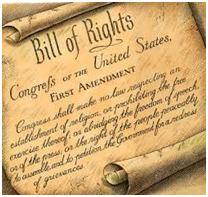 “I consider the government of the United States as interdicted by the Constitution from inter meddling with religious institutions, their doctrines, discipline, or exercises.”
“I consider the government of the United States as interdicted by the Constitution from inter meddling with religious institutions, their doctrines, discipline, or exercises.”
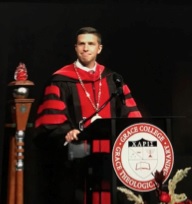 My Alma Maters, Grace College (B.A., 1966) and Grace Theological Seminary (M.Div., 1969) in Winona Lake, Indiana have installed DR. DREW FLAMM, Ph.D. to be their seventh president.
My Alma Maters, Grace College (B.A., 1966) and Grace Theological Seminary (M.Div., 1969) in Winona Lake, Indiana have installed DR. DREW FLAMM, Ph.D. to be their seventh president.

 True, we worship God throughout his creation.
True, we worship God throughout his creation. We start with one kind of psalm that is incredibly relevant given the bloodshed in Ukraine. We call them “Imprecatory Psalms” – psalms that call for death and pain on those who work evil in the world (“Imprecation” – what invokes a curse or pronounces a judgment). “Pour out your indignation on them, and let your burning anger overtake them” – Psalm 69:24.
We start with one kind of psalm that is incredibly relevant given the bloodshed in Ukraine. We call them “Imprecatory Psalms” – psalms that call for death and pain on those who work evil in the world (“Imprecation” – what invokes a curse or pronounces a judgment). “Pour out your indignation on them, and let your burning anger overtake them” – Psalm 69:24. Is there biblical PRECIDENT for such worship? O yes!
Is there biblical PRECIDENT for such worship? O yes! “[Jesus] read the Old Testament. It’s strange that many Christians don’t read what Jesus read.”
“[Jesus] read the Old Testament. It’s strange that many Christians don’t read what Jesus read.” 2. The Fellowship
2. The Fellowship Communion binds us together by the Spirit of God (1 Corinthians 10:17). I prefer to express this with a “common loaf” if at all possible. Breaking bread with my brother or sister is not privatistic like eating a tiny morsel of bread with my eyes closed can be.
Communion binds us together by the Spirit of God (1 Corinthians 10:17). I prefer to express this with a “common loaf” if at all possible. Breaking bread with my brother or sister is not privatistic like eating a tiny morsel of bread with my eyes closed can be. Taking Our Christian Baptism Seriously
Taking Our Christian Baptism Seriously #9 – “Triumphant Worship:
#9 – “Triumphant Worship: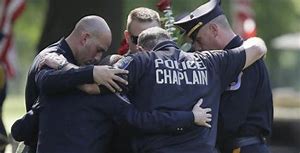 Back the Badge
Back the Badge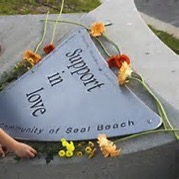 October 12, 2011 – Early in the afternoon an armed and angry man bent on evil entered a salon in Seal Beach, California and killed eight people including his ex-wife.
October 12, 2011 – Early in the afternoon an armed and angry man bent on evil entered a salon in Seal Beach, California and killed eight people including his ex-wife. Message of the Month –
Message of the Month – “Triumphant Worship: The Book of Revelation” – 9th Essay on Worship for 2022
“Triumphant Worship: The Book of Revelation” – 9th Essay on Worship for 2022 or the
or the 
 “I am the good shepherd. The good shepherd lays down his life for the sheep. The hired hand, who does now own the sheep, sees the wolf coming and leaves the sheep and flees, and the wolf snatches them and scatters them. He flees because he is a hired hand and cares nothing for the sheep.”
“I am the good shepherd. The good shepherd lays down his life for the sheep. The hired hand, who does now own the sheep, sees the wolf coming and leaves the sheep and flees, and the wolf snatches them and scatters them. He flees because he is a hired hand and cares nothing for the sheep.” Phrases like this have been displayed in public schools and elsewhere to promote students’ self-esteem.
Phrases like this have been displayed in public schools and elsewhere to promote students’ self-esteem. ♪“The Answer, My Friend,
♪“The Answer, My Friend,
 The “Voice of the Dodgers”
The “Voice of the Dodgers”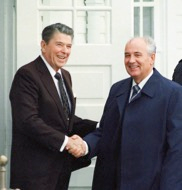 “The Last True Believer”
“The Last True Believer”

 Taking Our
Taking Our Communion binds us together by the Spirit of God (1 Corinthians 10:17). I prefer to express this with a “common loaf” if at all possible. Breaking bread with my brother or sister is not privatistic like eating a tiny morsel of bread with my eyes closed can be.
Communion binds us together by the Spirit of God (1 Corinthians 10:17). I prefer to express this with a “common loaf” if at all possible. Breaking bread with my brother or sister is not privatistic like eating a tiny morsel of bread with my eyes closed can be. It was barely a blip on the news in America. On Pentecost Sunday (June 5) two gunmen entered worship services at St. Francis Catholic Church in the town of Owo in southwestern Nigeria.
It was barely a blip on the news in America. On Pentecost Sunday (June 5) two gunmen entered worship services at St. Francis Catholic Church in the town of Owo in southwestern Nigeria. Attacks on pro-life counseling centers have been in the news since the U.S. Supreme Court returned the debate over abortion laws back to the states.
Attacks on pro-life counseling centers have been in the news since the U.S. Supreme Court returned the debate over abortion laws back to the states.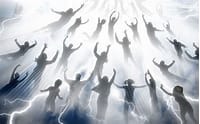
 Don has been a member of the clergy in the Long Beach, California area since
Don has been a member of the clergy in the Long Beach, California area since The birds of the sky nest by the waters;
The birds of the sky nest by the waters; Back the Badge
Back the Badge
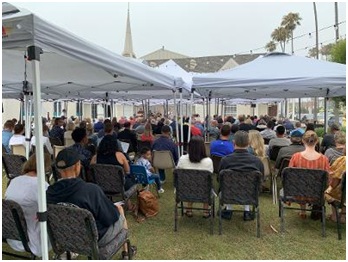 Men and women from the congregation offer prayers to open our church services. I thought this prayer given June 12 was especially excellent. I share it slightly abbreviated. Thanks to Andreas Gratopp, who gave me the text.
Men and women from the congregation offer prayers to open our church services. I thought this prayer given June 12 was especially excellent. I share it slightly abbreviated. Thanks to Andreas Gratopp, who gave me the text. “[Jesus] read the Old Testament. It’s strange that many Christians don’t read what Jesus read.”
“[Jesus] read the Old Testament. It’s strange that many Christians don’t read what Jesus read.”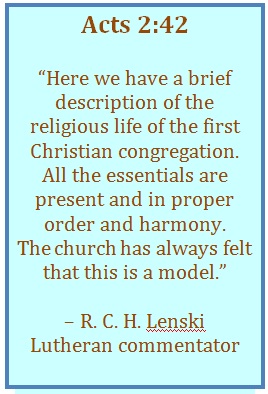 2. The Fellowship
2. The Fellowship 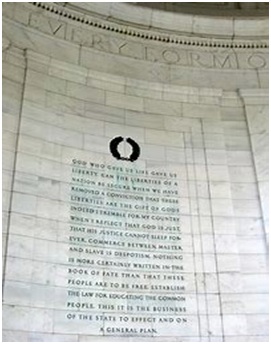
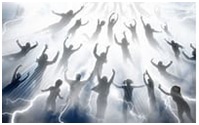 For Me, The “Rapture” Is Up in the Air!
For Me, The “Rapture” Is Up in the Air!
 PFC Winder crawled under fire to reach wounded soldiers. In spite of his own injuries he treated one wounded soldier. Before he could reach another he was mortally wounded.
PFC Winder crawled under fire to reach wounded soldiers. In spite of his own injuries he treated one wounded soldier. Before he could reach another he was mortally wounded.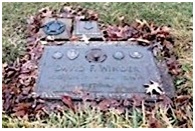 For his selfless effort to serve the fallen, he was awarded the
For his selfless effort to serve the fallen, he was awarded the 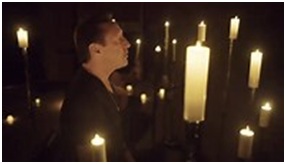 John Lennon’s “Imagine”
John Lennon’s “Imagine”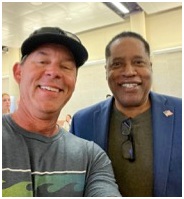 Son-in-law Rick Turner was waiting with friends at the San Antonio airport for a flight to LA when they noticed recent California gubernatorial candidate and talk radio personality
Son-in-law Rick Turner was waiting with friends at the San Antonio airport for a flight to LA when they noticed recent California gubernatorial candidate and talk radio personality 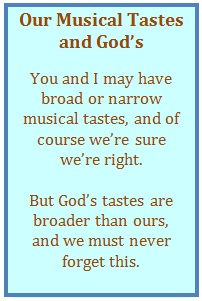 The theological term for this worship experience is “Whoa!”
The theological term for this worship experience is “Whoa!”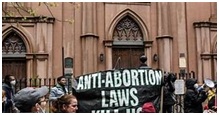 Protecting Places of Worship from Disruptive Protestors
Protecting Places of Worship from Disruptive Protestors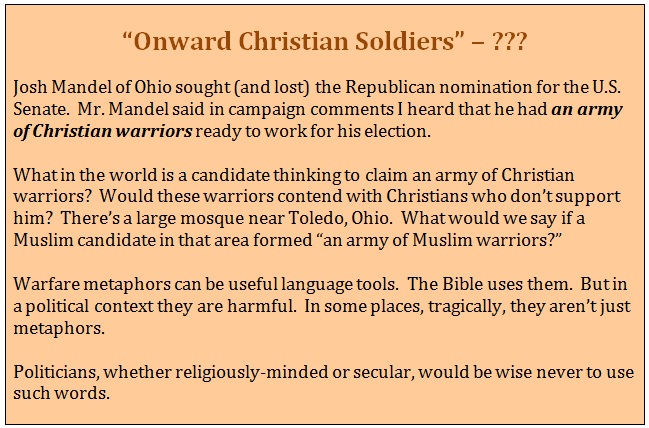 [/vc_column_text][/vc_column_inner][/vc_row_inner][vc_row_inner][vc_column_inner][vc_column_text]
[/vc_column_text][/vc_column_inner][/vc_row_inner][vc_row_inner][vc_column_inner][vc_column_text]
 For Me, The “Rapture” Is Up in the Air!
For Me, The “Rapture” Is Up in the Air!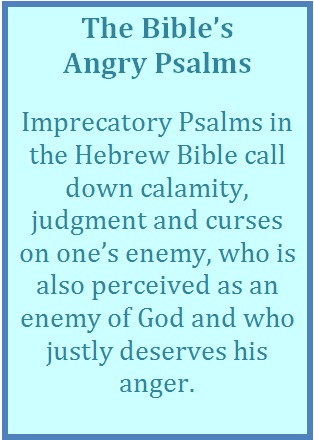 We start with one kind of psalm that is incredibly relevant given the bloodshed in Ukraine. We call them “Imprecatory Psalms” – psalms that call for death and pain on those who work evil in the world (“Imprecation” – what invokes a curse or pronounces a judgment). “Pour out your indignation on them, and let your burning anger overtake them” – Psalm 69:24.
We start with one kind of psalm that is incredibly relevant given the bloodshed in Ukraine. We call them “Imprecatory Psalms” – psalms that call for death and pain on those who work evil in the world (“Imprecation” – what invokes a curse or pronounces a judgment). “Pour out your indignation on them, and let your burning anger overtake them” – Psalm 69:24. [/vc_column_text][/vc_column_inner][/vc_row_inner][vc_row_inner][vc_column_inner][vc_column_text]
[/vc_column_text][/vc_column_inner][/vc_row_inner][vc_row_inner][vc_column_inner][vc_column_text]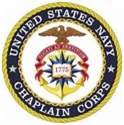 Pastors, Churches, Veterans, Active Military Personnel, Others who should be interested –
Pastors, Churches, Veterans, Active Military Personnel, Others who should be interested –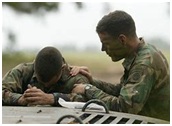 Imagine a chaplain putting his own life at risk during a serviceman’s final moments of life on the field of battle, leading the mortally wounded soldier in “The Lord’s Prayer.” Or providing solace to a soldier who has just lost his buddy in conflict. It happens.
Imagine a chaplain putting his own life at risk during a serviceman’s final moments of life on the field of battle, leading the mortally wounded soldier in “The Lord’s Prayer.” Or providing solace to a soldier who has just lost his buddy in conflict. It happens. My own denomination supports military chaplains through a ministry known as The Eagle Commission (
My own denomination supports military chaplains through a ministry known as The Eagle Commission (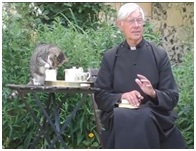 Dean of Canterbury Cathedral to Retire
Dean of Canterbury Cathedral to Retire Samaritans Purse
Samaritans Purse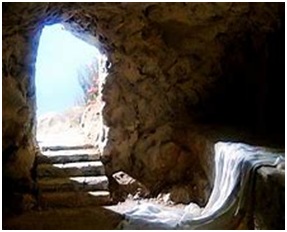 The Easter Hymn
The Easter Hymn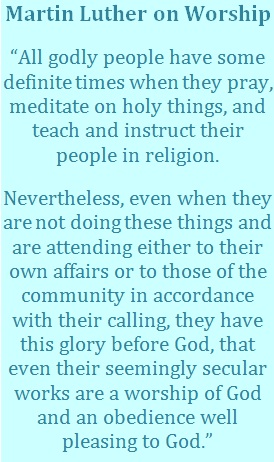 So we sing:
So we sing: Next month:
Next month: 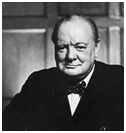 “Democracy is the worst form of Government except for all those other forms that have been tried.”
“Democracy is the worst form of Government except for all those other forms that have been tried.”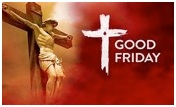 Good Friday is especially a day for reflecting on how we have “fallen short” of obedience to God (Romans 3:23). Here I reflect on the meaning of The Ten Commandments and offer a prayer for us to receive God’s forgiveness.
Good Friday is especially a day for reflecting on how we have “fallen short” of obedience to God (Romans 3:23). Here I reflect on the meaning of The Ten Commandments and offer a prayer for us to receive God’s forgiveness. “This is my body, given for you.
“This is my body, given for you.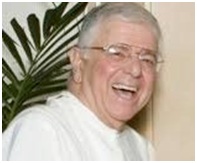 Once Again I Have Lost a Dear Friend
Once Again I Have Lost a Dear Friend